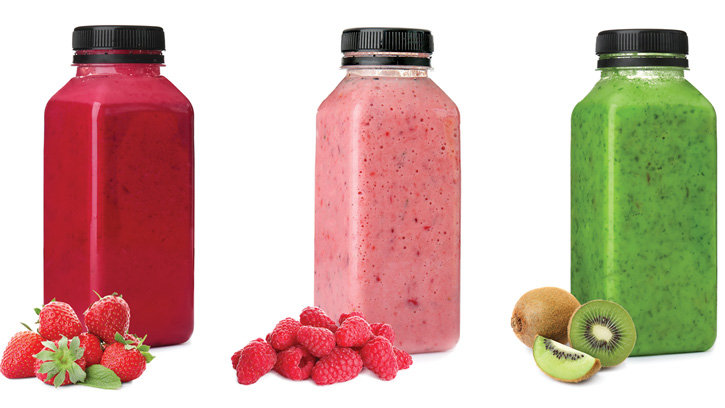Sensory Study Favors HPP for Smoothies
Science Forward | RESEARCH
Turning down the heat pumps up the sensory attributes of smoothies, an analysis of just over 25 years’ worth of data shows.
A group of researchers in Denmark conducted a literature review that spanned studies done between 1995 and 2021 to see if there were any perceivable differences with sensory qualities and consumer preferences between fruit juices and fruit smoothies produced using thermal processing (TP) and high pressure processing (HPP), which increasingly is favored for smoothie processing. Their review article was published this summer in Food Research International.
TP uses higher temperatures—around 60°C to 100°C—than HPP to destroy microorganisms or enzymes that can cause undesirable flavors, but it also may create a product with a “cooked” flavor. HPP, which preserves food by subjecting it to high pressure, uses much lower temperatures—around room temperature—and so avoids that problem, explains paper co-author Qiushuang Song of the Department of Technology and Innovation at the University of Southern Denmark. She notes that it doesn’t kill all the enzymes or microorganisms, however. Because of the lower temperatures, HPP also uses much less energy.
Today’s consumers are concerned about more than just safety, says Song. “Nowadays, we desire food to be fresh and to have an extended shelf life, and also we want it to have more sensory flavor,” she says.
Those changes are reflected in the time span of the papers Song and her co-authors analyzed. Over the years, the studies changed from focusing on food safety toward more sensory assessments, which aligns with the growth of sensory studies in product development.
The research also provided insights into the optimal time frame for cold storage. Most of the reviewed studies investigated HPP-treated products placed in cold storage for 12 to 120 days. The results depended on the product and the HPP treatment parameters, but, in general, products treated with HPP can last for a month in cold storage without a significant decrease in sensory quality, says Song. “We can say that during the same [time] period, the sensory quality of HPP products is always higher than that of TP products, which also means HPP has more advantages when we’re trying to maintain sensory qualities,” Song observes.
Sensory Mismatches
The researchers’ analysis also revealed some interesting and potentially significant inconsistencies in sensory testing processes. Analytical tests are used to discover the objective characteristics of a product, like its flavor profile, Song explains. Subjective characteristics are assessed via the affective method. The former should use panelists who are trained to provide specific data, and the second should use untrained consumers. Yet many studies switched the two.
“Some studies used trained assessors to get to know their subjective opinion, like the impression or likeability, and they used untrained consumers to get the objective aspects, like the intensity of some sensory attributes,” says Song. “The most mismatches occurred in the hedonic test, which is an affective test. They used trained panelists to get to know the acceptability of some products.”
Song says the mismatches most likely stem from lack of expertise among those conducting the assessments. Accurate sensory testing is important because data from an untrained panel would be questionable, she says, and a trained panel would not be representative of average consumers.
The researchers also identified a lack of consistent and specific definitions of sensory attributes, which can be confusing and makes it challenging—if not impossible—to replicate the sensory studies. “It’s quite important to clarify what we use and how we define it,” says Song.
The use of HPP in smoothie processing could be a selling point for consumers, notes Song, if they understand what it means, how it preserves sensory qualities, and the environmental sustainability benefits of its lower energy requirements.


